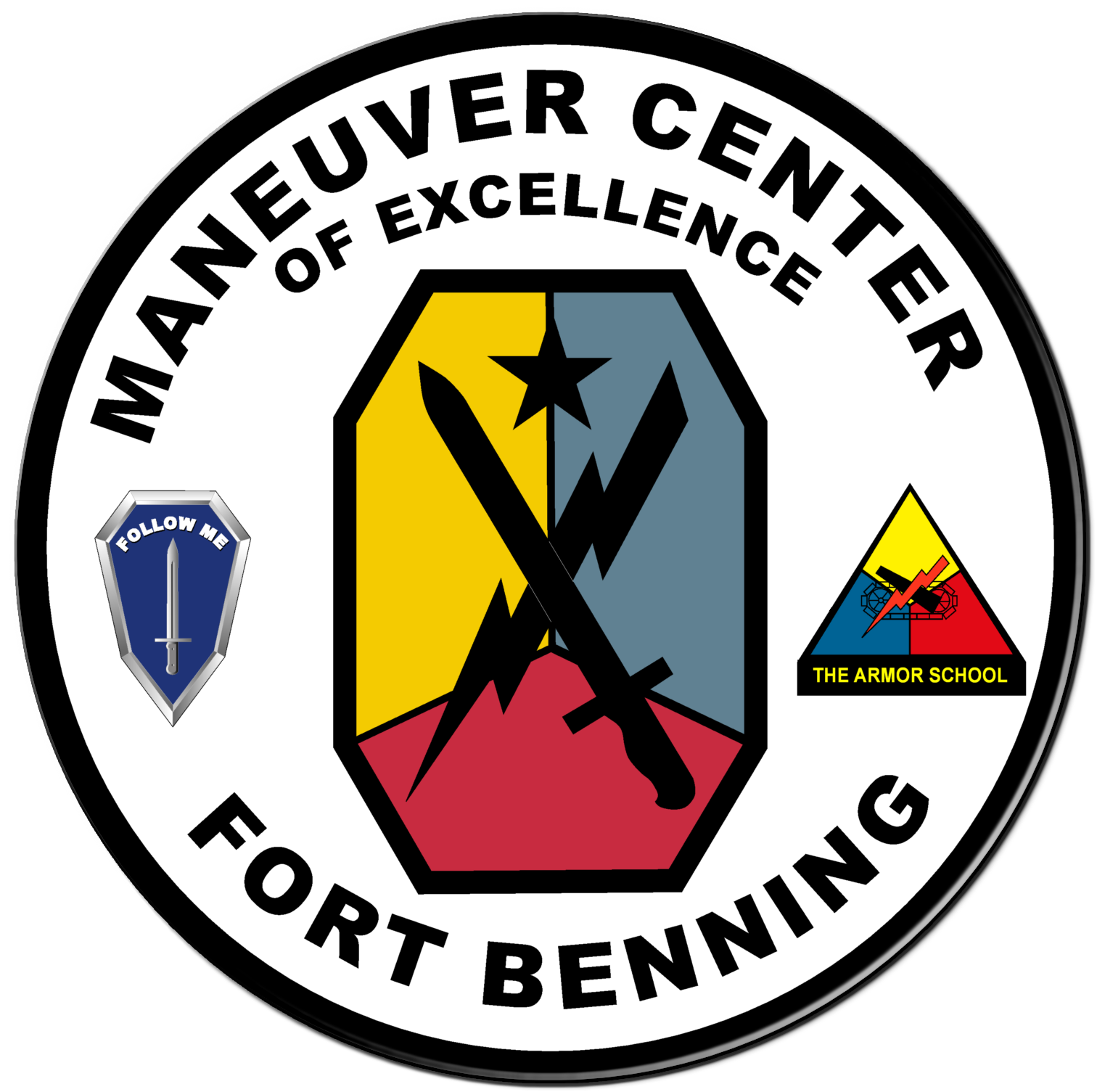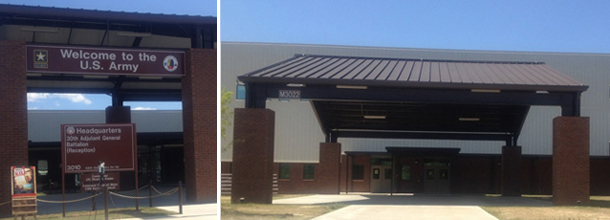Fort Benning
U.S. Army Fort Benning and The Maneuver Center of Excellence

Logistics Readiness Center (LRC) Site
Logistics Readiness Center (LRC)
Central Initial Issue Point (CIIP)

Central Initial Issue Point (CIIP)
0800-1630 M-F
Bldg 3010, 3rd IN Div Rd, Sand Hill
Office: (706) 544-8297
544-8297
Fax: (706) 544-9250
Supply External SOP
(Click here to view)
ALARACT 209-2014 - The New Army Physical Fitness Uniform
(Click here to view)
Army Athletic Footwear
(Click here to view)
TRADOC Athletic Footwear Exchange Policy
(Click here to view)
CIIP QMR Briefing
(Click here to view)
OCIE Personal Clothing Turn-In for IET Soldiers from the 194th and 198th
(Click here to view)
The Clothing Initial Issue Point (CIIP) is co-located with the 30th AG (reception) BN. Both are located at the Sand Hill area of Ft. Benning, Ga.
TRADOC has the responsibility for being the Army's executive agent for training Initial Entry Training (IET) Soldiers. Five (5) Clothing Initial Issue Points (CIIP) have the responsibility for issuing clothing bag items to male and female Soldiers as approved by the Chief of Staff, Army. The CIIPs are located at Forts Benning, Jackson, Knox, Leonard Wood, and Sill. The goal is for all Soldiers to receive 100% of their clothing bag their first time through the CIIP.
- The Clothing Initial Issue Point (CIIP) is responsible for the initial issue of personal clothing items to the Initial Entry Training Soldier. CIIP personnel must ensure that the soldier has received the best fitting uniform possible and that the service rendered in a professional and courteous manner.
*Saturday processing is done when special arrangements are made or mission requires it.
| CIIP Manager | Phone: 706-544-8297 Fax: 706-544-9250 |
| Govt. Rep | Phone: 706-545-2644 Fax: 706-545-5134 BB: 706-604-8156 |
Issues and operation of the CIIP are governed by (but not limited to) the following Publications:
- AR 700-84, Issue and Sale of Personal Clothing
- AR 725-50, Requisitioning, Receipt, and Issue System
- AR 710-2, Supply Policy Below the National Level, 28 Mar. 08
- AR 735-5, Policies and Procedures for Property Accountability, 28 Feb 05.
- CTA 50-900, Clothing and Individual Equipment
- TM 10-227, Fitting of Army Uniforms and Footwear
- TRADOC Manual
- Performance Based Agreement (PBA) between the Director, Defense Logistics Agency (DLA) and U.S. Army Training and Doctrine Command (TRADOC)
Phase I Issue
The CIIP will issue IET Soldiers their full clothing bag issue upon arrival to Ft. Benning's 30th AG reception Bn. This is done in 2 phases. Phase I is the issue of all clothing and equipment needed by the Soldier, to start his/her training. If a IET Soldier arrives after duty hours, or too late in the day to go through a full Phase I issue, there is a Night issue that will get the Soldier all he/she is required to get through the night and the next morning before processing through Phase I issue.
The Night issue consists of:
- Duffle bag - 1 each
- Barrack bag - 1 each
- Short sleeve PT shirts - 3 each
- Long sleeve PT shirts - 2 each
- Pair of black PT trunks - 3 each
- Sweatshirts - 2 each
- Sweatpants - 2 each
- Towels - 4 each
- Bag Duffie
- Jacket Wet Weather
- Jacket Cold Weather
- Hydration System
- Spectacles Industrial
The Phase I issue process consists of:
The Soldiers arrive at the CIIP at 1300 each work day and are lined up in roster number sequence. They are filed in the room seated from front to rear filling all seats; they are given an IRM scan form and then briefed. They will also receive (7) socks green, (7) sock liner black, (1) rigger belt, (1) pair of goggles, (3) flags, (3) US Army tabs, (1) identification tag silencer, and (1) ID chain. The Briefing consists of the issue procedures, the items that they will receive, exchange procedures, maintenance of the uniforms, and the service that they can expect to receive. Note: The Phase I Soldiers are briefed by the 30th AG processors.
They are then instructed to remove their shoes, and to undress from the waist up, leaving only their shirt next to the body on, placing everything in their duffle bag. They will then proceed through the listed stations where they will be fitted and receive the items they will need to complete training. During the issue process of Phase I items, some of these items fit snuggly; therefore it is required that the Soldiers have already had all their medical processing and haircuts, and also have been able to take care of personal hygiene, since some Soldiers will be trying on many different sizes of the same item to ensure proper fit.
The Phase I stations:
- Station 1- issued (7) pair of sand briefs, and (7) sand t-shirts. (Winter Issue: Poly Pros, light and heavy weight.)
- Station 2 – (1) black gloves, (2) pair insert, (2) patrol caps, elbow and knee pads. Individual measurements and the size prediction chart will be utilized to determine sizes issued.
- Station 3 – Trousers, Army Combat Uniform (ACU). Personnel will receive 4 pairs of ACU trousers. Individual measurements and the size prediction chart will be utilized to determine sizes issued.
- Station 4 – Coat, Army Combat Uniform (ACU). Personnel will receive 4 each ACU coats and (1) ACU Gore-Tex jacket.
- Station 5 – Boots. Personnel will receive (1) pair of hot weather boots and (1) pair of temperate weather boots. Measurements from the foot measuring device will be utilized to assist in determining the size to be issued.
- Station 6- Shake down. The purpose of shake down is to ensure that each individual had all clothing in authorized quantities. After all clothing had been checked, the individual will sign his copy of the IRM scan sheet. CIIP personnel conducting the shake down will collect these forms and turn them into the Administration Office for processing.
This process is done on the first full day of processing, to ensure that the Soldier gets a chance to wear the equipment and clothing to ensure proper fit and serviceability prior to shipping to their training unit. This allows for seasoned professionals to view the fit and wear of the uniform and clothing, and the troops to wear the boots to ensure proper fit, without causing blisters. If there is a problem with any of the issue prior to shipping to the training units, the individual can return to the CIIP with 30th AG processors, to exchange equipment / clothing / boots for the proper fitting ones.
Phase II Issue
The CIIP will issue IET Soldiers their full clothing bag issue upon arrival to Ft. Benning's 30th AG reception Bn. This is done in 2 phases. Phase II is the issue of all clothing and equipment that will make up each Soldier's dress uniform or Class "A" uniform. This phase is usually done during the 5th or 6th week for Basic Combat Trainees (BCT) and One Station Unit Trainees (OSUT).
On October 1, 2010, the Army transitioned from the Army Green Dress Uniform to the New Army Service Uniform (ASU). The CIIP has also transitioned and all Phase II issues following the aforementioned start date will be of the new ASU.
The CIIP is only authorized to issue the ASU to the new IET Soldier (after 1 Oct 10) and to the Drill Sergeants identified by the Brigade S4's and approved by the Brigade Commanders.
Phase II Issues are scheduled on the Freeze Data by G3 DOT (706-545-4764) with the exception of special circumstances.
The Phase II issue process consists of:
Personnel are brought in by alphabetical order in PT uniform with black sock liners. As the Soldiers enter the building, they receive an IRM scan form and (2) alteration tag(s). Each individual will be issued (1) necktie, (1) belt, and (2) white t-shirts. They will then be seated in order to fill out the alteration tags. At this time, all personnel are measured and processed into Station 1.
- Station 1 – Shoes. All personnel are issued (1) pair of dress shoes. Boot sizes will be used as a starting point in fitting the shoes.
- Station 2 – Issued dress shirt, (1) long sleeve, (2) short sleeves, and (2) black berets. Individual measurements and the size prediction chart will be utilized in determining sizes to issue.
- Station 3 – (2) Trousers, AB-451 (with Braid for NCO's) - Individual measurements and the size prediction chart will be utilized in determining sizes to be issued. After the trousers have been measured, the measurement will be indicated on the repair tag given to the individual for that purpose. The trousers will be ready at final fit. (Allow 5 days for alterations.)
- Station 4 –. (1) AB-450 Coat - All Soldiers - Individual measurements and the size prediction chart will be utilized in determining sizes to be issued. After the Coat has been measured, the measurement will be indicated on the alteration tag given to the individual for that purpose. Coat will be altered and ready at final fit. (Return to Company 21 days prior to graduation.)
- Station 5 – (1) All Weather Coat, Black Dress gloves and US Insignia. The all weather coat will be fitted utilizing individual measurements and the size prediction chart.
- Station 6– Shake down. The purpose of shake down is to ensure that each individual has all clothing in authorized quantities. After all clothing has been checked, the individual will sign his copy of the IRM scan sheet. CIIP personnel conducting the shake down will collect these forms and turn them into the Administration Office for processing.
- Station 7 – Final Fitting. CIIP Personnel will ensure that the Soldier is properly fitted and have final concept of fit authority. The cadre will be involved in checking and inspection of the Soldier uniform IAW TM 10-227.
-
Special Measurements and Potential Candidates for Special Measurements
Measurement clothing and footwear items will be identified early in the processing cycle. Special measurement for clothing and footwear shall be made IAW AR 700-84. This will be done for those Soldiers who cannot be fitted by stocked items orauthorized alterations. Personnel responsible for special measurement will be knowledgeable of the Defense Support Personnel Center (DSCP) procedures.